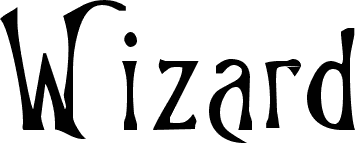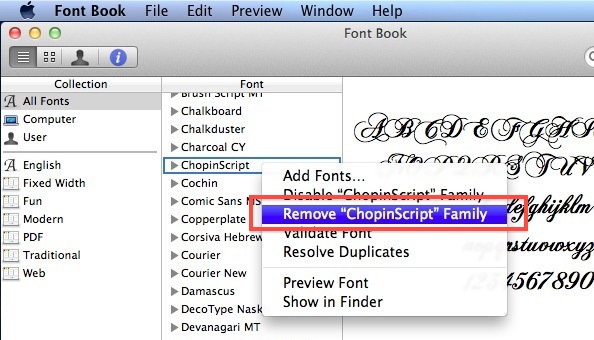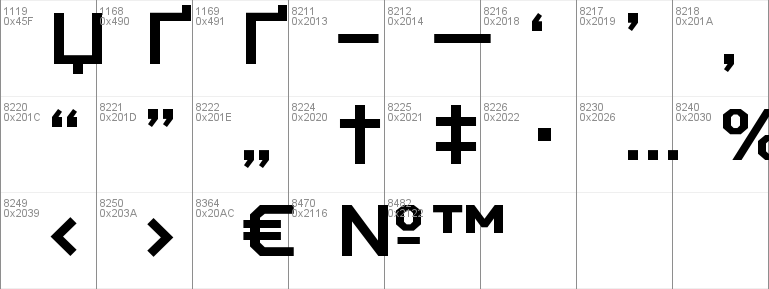- Free Hebrew Fonts Download
- Hebrew Fonts For Microsoft Word
- Free Hebrew Font Mac
- Free Hebrew Fonts For Word
Hebrew Fonts free download - Script and Calligraphy Fonts, Carolina Barcode Fonts, BarCodeWiz Code 128 Barcode Fonts, and many more programs. For Windows 7 / Vista users: - Right-click the Stam Ashkenaz CLM Medium font file (s) and choose 'Install'. For users of the previous Windows versions: - Copy Stam Ashkenaz CLM Medium font & pest into a default Windows font folder (usually C:WINDOWSFONTS or C:WINNTFONTS) For Mac users: Mac OS X 10.3 or above (including the FontBook).
How to Type in Hebrew
ByJeff A. Benner..with a Hebrew keyboard
..with UTF-8 Character Encoding
..with Graphics
The simplest method of typing in Hebrew, especially if you are just typing a few letters or words, is to download a Hebrew font for the English keyboard (left to right typing). These type of fonts work the same as any other font you place in your computer, the drawback being that you have to type the Hebrew words backwards. For example, in order to type the word אלהים (elohiym) you would need to type the final mem (ם), the yud (י), the hey (ה), the lamed (ל) and then the aleph (א).
Download arabic keyboard microsoft word.
 Hebrew Fonts for the English Keyboard
Hebrew Fonts for the English KeyboardTo help with identifying the proper keyboard character for each letter in the fonts listed below, download this handy chart.
Modern Hebrew: Also called the 'Aramaic square script,' this is the font that is used today in Hebrew Bibles and books as well as the alphabet used in Israel today. [Download]
DSS Hebrew (Late Semtic): This is the Hebrew script used in the Great Isaiah scroll and is representative of the Hebrew found in most of the Dead Sea Scrolls. [Download]
Paleo Hebrew (Middle Semitic): This is the Hebrew alphabet that was in use from about 1200 BCE and into the first century CE. This font was created by the Ebionite.org. [Download]
Moabite Stone (Middle Semitic): This is the script used on the Moabite stone, which is written in Moabite, virtually identical to the Hebrew language and the Paleo-Hebrew script. [Download]
Ancient Hebrew (Early Semitic): This is the original pictographic script used by all Semitic peoples, including the Hebrews, prior to 1200 BCE. [Download]
Early Semitic: This font is similar to the 'Ancient Hebrew' font above. It was created by AHRC many years ago (before any ancient Hebrew fonts existed on the internet), but is a little outdated as much better fonts are now available. We have chosen to continue to offer it here as many are still using this font. [Download]
The best method for typing in Hebrew is to add the Hebrew keyboard to your computer. This will allow you to type in Hebrew from right to left. With the Hebrew keyboard you can use various styles of fonts, much the same way you do with the English keyboard. Here is the Hebrew אלהים in different standard fonts - אלהים (arial), אלהים (Times New Roman) and אלהים (David).
In order to type in Hebrew (from right to left, using the Hebrew alphabet) you must configure your computer. The following steps for various operating systems will give you a step by step procedure for doing this.
Windows 10- Select the Start button, then select Settings > Time & Language > Language.
- Under Preferred languages, select Hebrew(עברית), and then select Options.
- Select Add a keyboard and choose Hebrew (עברית).
- Use 'Alt + Shift' to toggle between languages.
- Go to Control Panel, Regional and Language Options, Languages tab
- Make sure that 'Install files for complex script and right-to-left languages (including Thai)' is ticked: If it isn't ticked, tick it and click OK, follow the prompts to restart Windows, and start this process again.
- Click Details button, click Add
- Select Hebrew for the Input language and US keyboard layout from the 'Keyboard layout/IME' list, click OK
- Click OK, OK
- Use 'Alt + Shift' to toggle between languages.
- Go to Control Panel, 'Change keyboards or other input methods', under the 'Clock, Language and Region' option (in Classic View, select Regional and Language Options, Keyboards and Languages tab)
- Click Change Keyboards, click Add
- Select Hebrew, and US keyboard layout from the 'Keyboard layout/IME' list, click OK
- Click OK, OK
- Use 'Alt + Shift' to toggle between languages.
- Go to Control Panel and select 'Region and Language.
- Click the tab 'Keyboards and Languages'
- Click Change Keyboards, click Add
- From the list select Hebrew, and checkmark Hebrew under keyboard, click OK
- Click OK, OK
- Use 'Alt + Shift' to toggle between languages.
- Go to Control Panel, Regional Options, General tab
- In the 'Language settings for the system' box, make sure Hebrew is ticked: If it isn't ticked, tick it and click OK, follow the prompts to restart Windows, and start this process again.
- Click Input Locales tab, click Add
- Select Hebrew for the Input language, and US keyboard layout from the 'Keyboard layout/IME' list, click OK
- Click OK
- Use 'Alt + Shift' to toggle between languages.
- Open System Preferences
- Click the International button
- Click 'Input Menu'
- Scroll down until you see Hebrew, then put a check next to it
- Put a check next to 'Show input menu in menu bar'
- To change the language to Hebrew when you type, click on the American flag on the top right of the menu bar, and then select Hebrew. From now on when you type with the Hebrew flag selected, Hebrew letters will show up.
Linux/*nix operating systems that have a modern 'x11' windowing system, can run Gnome:
- Go to System -> Preferences -> Keyboard
- Go to the Layouts tab
- Click Add
- Go to 'by language' tab
- On the _language_ drop down choose Hebrew
- On the _variant_ drop down choose Tiro
- Click Add
- Now click 'Layout options'
- Expand _Key(s) to change layout_
- Default is both Alt keys together, which is probably a good option.
- Your selected Keys will now cycle through the list of keyboard layouts that you have set in Gnome's keyboard control panel.
Hebrew Fonts for the Hebrew Keyboard

To help with identifying the proper keyboard character for each letter in the fonts listed below, download this handy chart.
Modern Hebrew: Once your keyboard is set up to type in Hebrew, it will automatically type with Hebrew characters. However, there are plenty of fonts available for Hebrew and if the 'David' font is not already on your system, I recommend it. [Download]
Paleo Hebrew (Middle Semitic): This is the Hebrew alphabet that was in use from about 1200 BCE and into the first century CE. This font was created by the Ebionite.org. [Download]
Ultra print rip software download. Ancient Hebrew (Early Semitic): This is the original pictographic script used by all Semitic peoples, including the Hebrews, prior to 1200 BCE. [Download]
Typing Hebrew Vowel Points (Niqud)
To type Niqud in the Hebrew versions of Windows and Word, place the cursor after the letter you wish to add Niqud to, enter Caps Lock mode, and press shift in conjunction with one of the keyboard character identified in the chart below. (Note: When multiple points are needed, their order is: First Dagesh, then Shin or Sin Dot, then the vowel.)
|
|

Besides using Hebrew fonts, an alternative is to use the Hebrew Unicode. Every character, from the English alphabet to Russian Cyrillic and from the copyright symbol to the upside down question mark used in Spanish, is assigned a number, which when is preceded by '&#' appears in html coding as that character. For instance, the unicode א will appear as א (the Hebrew letter aleph).
HTML and word processors use special codes to add special symbols to the text. An example is the copyright symbol '©' which is written with the unicode '©.' There are also codes for other languages including Hebrew that can be added to most word processors and HTML documents. Below are the unicodes for the Hebrew alphabet, the nikkud (vowel pointings) and other Hebrew symbols. You can paste the code into an html document or the actual Hebrew character into a word processor.

| וֹ | ו | ה | ד | ג | ב | בּ | א |
| וֹ | ו | ה | ד | ג | ב | בּ | א |
| ך | כּ | כ | י | ט | ח | ז | וּ |
| ך | כּ | כ | י | ט | ח | ז | וּ |
| פּ | ע | ס | ן | נ | ם | מ | ל |
| פּ | ע | ס | ן | נ | ם | מ | ל |
| שׁ | ש | ר | ק | ץ | צ | ף | פ |
| שׁ | ש | ר | ק | ץ | צ | ף | פ |
| ת | תּ | שׂ | |||||
| ת | תּ | שׂ |
Free Hebrew Fonts Download
| oַ | oֶ | oֵ | oִ | oֳ | oֲ | oֱ | oְ |
| ַ | ֶ | ֵ | ִ | ֳ | ֲ | ֱ | ְ |
| oֻ | oֹ | oָ | |||||
| ֻ | ֹ | ָ |
Using the unicodes in HTML

Hebrew Fonts For Microsoft Word
Here is the Hebrew Text for Genesis 1:1;
Below is the unicode used for the above verse (I like to place one word on one line, this will make finding a word for editing easier).
<Font face='david' size='+2'>בְּרֵאשִׁית
בָּרָא
אֱלֹהִים
אֵת
הַשָּׁמַיִם
וְאֵת
הָאָרֶץ׃
</Font>
Download the Hebrew Font Graphics zip file, which includes images for the ancient, paleo and modern Hebrew alphabets. Unzip the file and place all of the images in a folder, such as 'hebrewgraphics,' on your computer.
To add the graphics to a document, simply copy and paste the desired graphic or graphics into your document and then adjust the graphic to its desired size.
To add the graphics to a web page use the following html code;
Which will appear as follows;
| Learn to Read Biblical Hebrew (Video Course) Everything you need to learn Hebrew from the alphabet to translating the Bible on your own. |
| Learn Biblical Hebrew (Lessons) In just 17 short lessons you will be well on your way to translating the Hebrew Bible for yourself. |
| Learn the Ancient Hebrew Alphabet and Language (Video Course) Learn the cultural background of the Hebrew language and how to read and interpret ancient Hebrew texts and Inscriptions. |
- Accents (partial)
- Accents (full)
- Euro
- Smilies
- Card symbols
- Music
- Accents (partial)
- Accents (full)
- Euro
- Smilies
- Card symbols
- Music
- Accents (partial)
- Accents (full)
- Euro
- Card symbols
- Music
- Accents (partial)
- Accents (full)
- Euro
- Smilies
- Card symbols
- Music
- Accents (partial)
- Accents (full)
- Euro
- Smilies
- Card symbols
- Music
- Accents (partial)
- Accents (full)
- Euro
- Smilies
- Card symbols
- Music
Free Hebrew Font Mac
- Accents (partial)
- Accents (full)
- Euro
- Card symbols
- Music
- Accents (partial)
- Accents (full)
- Euro
- Smilies
- Card symbols
- Music
- Accents (partial)
- Accents (full)
- Euro
- Smilies
- Card symbols
- Music
- Accents (partial)
- Accents (full)
- Euro
- Smilies
- Card symbols
- Music
Free Hebrew Fonts For Word
- 1-10 of 65 results